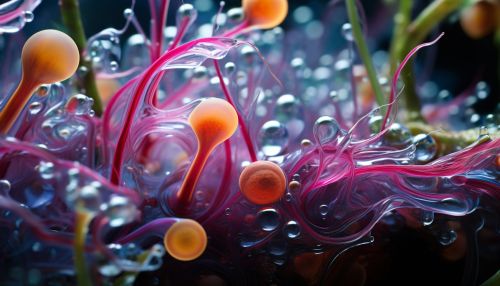Vibrionaceae
Introduction
The Vibrionaceae are a family of Gram-negative bacteria, inhabiting marine environments. The curved rod shape is one of the defining characteristics of the Vibrionaceae, which gives them their name. They are oxidase positive, and most species are facultative anaerobes.


Taxonomy
The Vibrionaceae family is a member of the order Vibrionales, which belongs to the class Gammaproteobacteria. The family includes the genera Vibrio, Photobacterium, Listonella, and several others. The taxonomy of this family has undergone a number of changes in the last few years, with the reclassification of several species based on advanced molecular techniques.
Morphology and Physiology
Members of the Vibrionaceae are typically straight or curved rods, and they are often found in pairs. They are motile by means of polar flagella and can survive in both aerobic and anaerobic conditions. Many species are capable of fermentation, which allows them to survive in environments with low oxygen levels.
Ecology
Vibrionaceae are predominantly found in aquatic environments, particularly marine and estuarine ecosystems. They play a crucial role in the nutrient cycling in these environments. Some species are bioluminescent, and they are often associated with marine animals, forming symbiotic relationships.
Pathogenicity
Several species of Vibrionaceae are known to be pathogenic to humans and other animals. The most well-known is Vibrio cholerae, the causative agent of cholera. Other species, such as Vibrio vulnificus and Vibrio parahaemolyticus, can cause foodborne illness, usually associated with the consumption of contaminated seafood.
Genomics
The genomes of several Vibrionaceae species have been sequenced, providing valuable insights into their physiology, ecology, and pathogenicity. Comparative genomics studies have revealed a high degree of genomic diversity within this family, reflecting their adaptation to diverse environments and hosts.
